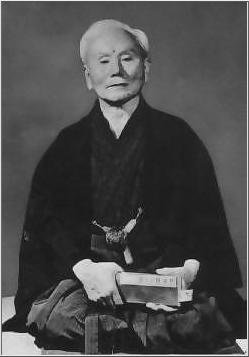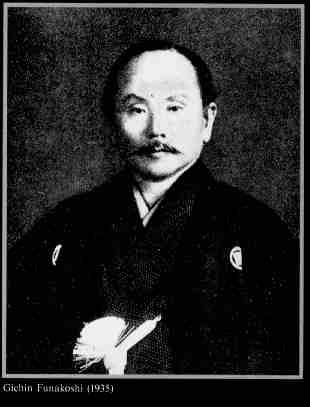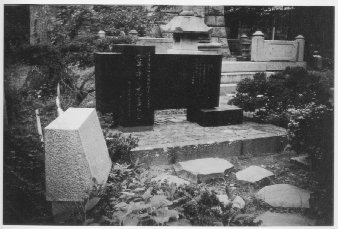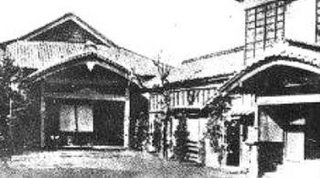ORIGINS OF KARATE
Although the popular notion is that Karate was initially developed in Okinawa , it's roots are thought to stretch back over 1400 years to Daruma, the founder of Zen Buddhism. Daruma travelled from India to China to teach Buddhism and taught his followers techniques to develop and strengthen mind and body, many of which are basic to modern Karate. His methods were taught in the Shaolin Temple in China , where they eventually developed into the fighting technique known as Shaolin boxing.
Shaolin boxing made its way to Okinawa around the 16th century and was combined with some indigenous Okinawan techniques to form several different fighting styles.
During many periods of Okinawan history, the general population were forbidden to own or carry weapons and this resulted in rapid advancement of fighting techniques and the underground development of fighting styles using bare hands or common farming implements.
These forms of fighting were known as Okinawa-te or Tode (Chinese Hand) and resulted in the formation of three distinct styles, Shuri-te, Naha-te and Tomari-te (named after the cities where the styles were practiced). The Shorin-ryu style of karate is though to have originated from Shuri and Tomari and Shorei-ryu from the city of Naha .
The Shorin-ryu style consisted of fast, linear movements with natural breathing, whilst Shorei-ryu taught strong, rooted techniques with synchronous breathing.
Gichin Funakoshi was born in 1868 in Okinawa and began to study karate at the age of 11. He studied under many great Okinawan masters of the time and rapidly became adept at both the Shorin and Shorei styles. In fact many of today's modern Shotokan katas have their roots in the original Okinawa-te or Tode katas.
Tode could also be pronounced as kara and so Tode-te became Kara-te or 'Chinese hand'. Funakoshi adopted the alternate meaning for the chinese character for 'kara' which is empty and so kara-te came to mean 'empty hand'.
Karate was first demonsrated in Japan in 1917 by Gichin Funakoshi at the Butoku-den in Kyoto . He was invited back in 1922 by Dr, Jano Kano, the founder of Judo, and remained in Japan to teach Karate at the Kodokan Dojo with the backing of the Judo master.
Karate gained massive popularity with university students and Funakoshi continued to teach at various colleges around Japan . It is at these colleges and universities that many of the modern masters such as Nakayama, Obata, Noguchi and Watanabe were introduced to the art.
By the mid 1930's Gichin Funakoshi started to have less to do with the running of his clubs and handed control to his son Yoshitaka. Yoshitaka continued to modernise the style until in 1936, the Funakoshi's opened a new central dojo - the Shoto-kan (hall of shoto). Shoto was the pen name Gichin Funakoshi used to sign the poems he had written in his youth.
World War II had a serious effect on the growth of Karate in Japan , as many of the former practitioners went off to serve in Japan 's armed forces.
The additional blows of the death of Yoshitaka, the destruction of the Shoto-kan and the banning of Martial Arts by the conquering Allied forces, left Shotokan Karate in complete disarray.
Gichin Funakoshi managed to get the ban on Karate lifted and in 1948 the Nihon Karate Kyokai (Japan Karate Association) was formed, with Master Funakoshi named as chief instructor. Due to Funakoshi's advancing age (81), Masatoshi Nakayama took on most the teaching and Hidetaka Nishiyama headed up the instruction committee.
Master Funakoshi died in April of 1957. Engraved on his tombstone are the words "Karate ni sente nashi" or "There is no first attack in Karate".
After his death, Funakoshi's students adopted "Shotokan" as the name of the style of karate they practiced and today Shotokan is one of the most popular martial styles in the world.
Shoto Niju Kun (Gichin Funakoshi's 20 Precepts)
#1 Never forget
that karate begins and ends with respect.
#2 There is no first attack in karate.
#3 Karate fosters righteousness.
#4 First know yourself and then know others.
#5 Rather than physical technique, mental technique.
#6 Let your mind roam freely.
#7 Inattention and neglect causes misfortune.
#8 Never think that karate is practiced only in the dojo.
#9 Karate is a life-long pursuit.
#10 Everything you encounter is an aspect of karate: find the marvelous truth
there.
#11 Karate is like boiling water: if you do not keep the flame high, it turns
tepid.
#12 Do not think about winning; think about not losing.
#13 Respond in accordance to your opponent.
#14 Wage the battle with natural strategy.
#15 Regard your hands and feet as sharp swords.
#16 Step out the door and you face 10,000 foes.
#17 Learn various stances as a beginner but then rely on a natural posture.
#18 The kata must always be practiced correctly: real combat is another matter.
#19 Never forget your own strengths and weakness, the limitations of your body,
and the relative quality of your techniques.
#20 Continuously polish your mind.




